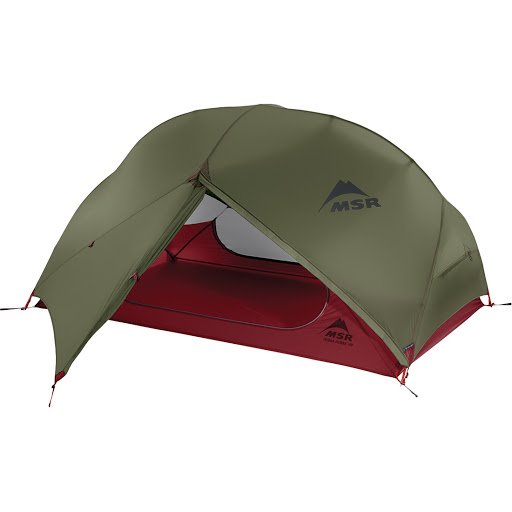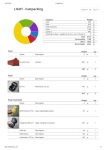‘We want as many runners as possible to enjoy Norwegian wilderness and Norwegian mountains.’

All images copyright iancorless.com - all rights reserved.
Established in 1962, the Rondane National Park is the oldest national park in Norway. Covering 963 square km’s, the park contains ten peaks above 2000m, the highest peak being Rondeslottet at 2178m.
Folldal, an old mining village, is the hub for the race with the start and finishing taking place in the same location.
Race day started at 0500 and it was clear from the clear skies that a beautiful day lay ahead for the runners. Maybe too good some would say…
Although a chill penetrated the early morning air, the arrival of the sun and the early miles warmed the runners up quickly and by the 10-mile point, the format of the racing that would come started to take shape.

Pre-race favourite, Sebastian Krogvig did not hold back early on, opening up a 12-minute lead over the hot favourite, Paul Ogier with 10-miles covered.

For the women, Molly Bazilchuk eased herself in to the day, allowing the early miles to save energy and settle, knowing that a big day lay ahead. She was shadowed by Katrine Andersen.

By 0900, with 4-hours covered, the day was already hot and with a long and tough race ahead, the early miles were best taken easy. With five key aid stations, Nygruva, Dørålseter, Straumbu, Breijøseter and Grimsbu, an ability to be self-sufficient for long periods is an essential characteristic of this race.
A land full of reindeer, mining heritage and traces from the last ice-age, Rondane provides an opportunity to experience 2000m summits that are very unique and it contast to Jotunheimen, completely different both in look and feel.
At Nygruva, Sebastian was well ahead of the predicted pace and although there had been much talk of 20-hours winning the race, based on the first aid station, sub 16 looked possible. Paul Ogier, running his first 100-mile race had recced all but 5km of the 100 route and with that experience, he paced himself allowing Sebastian to run his own race. Behind, Marius Stengle-Håkonsen, Elvind E Gjøystdal, Staffan Bengtsson, Vegard Triseth and Samuel Fredriksson chased.
Molly, was now taking hold of the women´s race and making her way through the men´s race as was Liv Richter.

Marius Stengle-Håkonsen
Dørålglupen, a wonderful gully of rocks was a significant marker in the race and now Sebastian and Molly were showing there strength. By the aid station Dørålster, Sebastian had opened a lead of over 45-minutes on Paul.

Molly pushing up Dørålglupen
Molly was more metronimic, steady and slowly stretching the elastic over the competition. Liv equally looked relaxed using her poles to climb and descend. Inger Aarberg was looking strong, Katrine Anderson looked to paying a price for the early pace with Molly and Kari Forbrigd, Gro Siljan Hjuske and Inger Haugland looked ready for the long fight ahead.
At all times, the landscape was rewarding the runners with spectacular views. Nestles between rolling mountains, the green landscape was broken with single-track, gravel roads and lakes. The intense blue sky contrasting nicely.
Straumbu was a significant aid point and for many, the key aid before the night section with drop bags available. Sebastian arrived but it was clear that all was not well. Post-race he would confirm that his legs had never felt better, but he had somehow managed to get his electrolyte blance wrong… Sitting in a chair, his heart raced. On medical advice, he withdrew from the race.

Paul Ogier now took the reigns at the front. He looked relaxed leaving the aid station and as he climbed through the forest with the golden sun leaving the day, he looked set for Rondane victory. Marius Stengle-Håkonsen pursued, as did Staffan Bengtsson and Elvind E Gjøystdal.

But Molly was looking increasingly strong with the passing of time and it was clear that the predicted overall podium slot was in contention. Behind, Liv and Inger were having a close battle.
Night is always tough. The leaving of one day, the body naturally craves sleep and rest, for the 100 runner, night time is something to be endured, pushed through and the welcome of a new day brings new life. Luckily, Norwegian nights are not as long as in other places!
Paul and Molly would not welcome the new light on the course, they would both finish their runs in darkness, 20:59:23 and 22:39:07 respectively. Marius would split them in 2nd place overall in 21:42:29. For Molly, it was a 3rd overall placing; an incredible run.
Staffan Bengtsson rounded out the male podium in 24:00:02, placing 4th overall.
Liv fought hard for her 2nd place in 25:26:27…. So hard, she collapsed at the finish and was taken to hospital with a potential stress fracture or kidney issues. It was later confirmd to be kidney issues brought on by a hot day, dehydration and well, running 100-miles! Inger Aaberg completed the women´s podium in 27:33:42.
Coronavirus has stopped racing globally, the impact has been huge. But here, in Norway, a relatively low-key race brought a fierce battle over a truly incredible and beautiful course.

How beautiful? Well, in some respects, the story of one participant sums it up. He unfortunately took a tumble on the rocks and broke his ankle. After receiving medical attention, he waited for a helicopter rescue and cheered on the runners. Due to demands on the five helicopters that cover the area, he had a long wait… Finally, when back in Folldal, race director Erik Haugland, apologised for the delay. The response was clear, ´Don´t be silly… If you are going to break an ankle, I did it in a perfect place. The scenery was incredible, the waether glorious and I got to cheer on the competitors. I will be back next year!´

Full results are available at racetracker.no

VIEW THE RACE IMAGES HERE
IMAGES CAN BE PURCHASED HERE

Top 5 Male and Female:
- Paul Ogier
- Marius Stengle-Håkonsen
- Staffan Bengtsson
- Elvind E Gjøystdal
- Sanuel Fredriksson
- Molly Bazilchuk
- Liv Richter
- Inger Aaberg
- Kari Forbrigd
- Gro Siljan Hjuske

Please support this website. I believe everyone deserves to read quality, independent and factual articles – that’s why this website is open to all. Free press has never been so vital. I hope I can keep providing independent articles with your help. Any contribution, however big or small, is so valuable to help finance regular content. Please support me on Patreon HERE.

Follow on:
Instagram – @iancorlessphotography
Twitter – @talkultra
facebook.com/iancorlessphotography
Web – www.iancorless.com
Web – www.iancorlessphotography.com
Image sales –www.iancorless.photoshelter.com



































